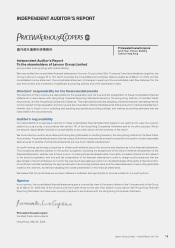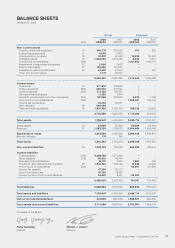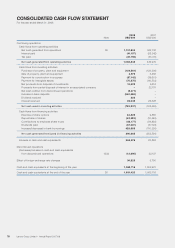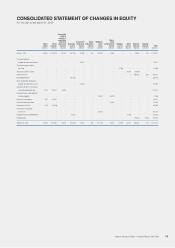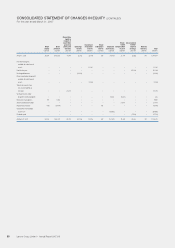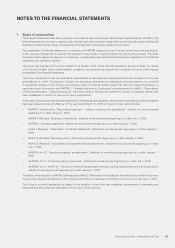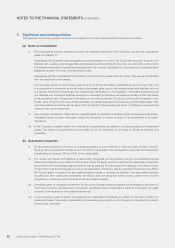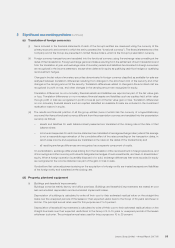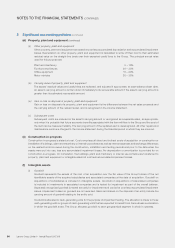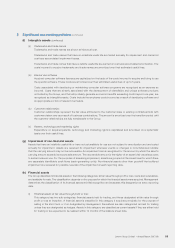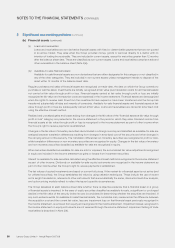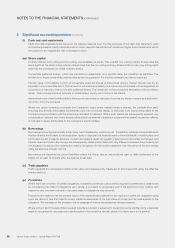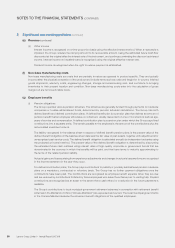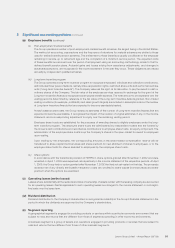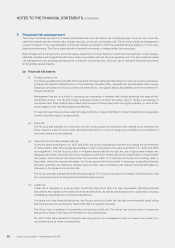Lenovo 2008 Annual Report Download - page 87
Download and view the complete annual report
Please find page 87 of the 2008 Lenovo annual report below. You can navigate through the pages in the report by either clicking on the pages listed below, or by using the keyword search tool below to find specific information within the annual report.
2 Significant accounting policies (continued)
(f) Intangible assets (continued)
(ii) Trademarks and trade names
Trademarks and trade names are shown at historical cost.
Trademarks and trade names that have an indefinite useful life are tested annually for impairment and carried at
cost less accumulated impairment losses.
Trademarks and trade names that have a definite useful life are carried at cost less accumulated amortization. The
costs incurred to acquire trademarks and trade names are amortized over their estimated useful lives.
(iii) Internal use software
Acquired computer software licences are capitalized on the basis of the costs incurred to acquire and bring to use
the specific software. These costs are amortized over their estimated useful lives of up to 5 years.
Costs associated with developing or maintaining computer software programs are recognized as an expense as
incurred. Costs that are directly associated with the development of identifiable and unique software products
controlled by the Group, and that will probably generate economic benefits exceeding costs beyond one year, are
recognized as intangible assets. Costs include the employee costs incurred as a result of developing software and
an appropriate portion of relevant overheads.
(iv) Customer relationships
Customer relationships represent the fair value attributed to the customer base or existing contractual bids with
customers taken over as a result of business combinations. The amount is amortized over the transition period until
the customer relationships are fully transferable to the Group.
(v) Patents, technology and marketing rights
Expenditure on acquired patents, technology and marketing rights is capitalized and amortized on a systematic
basis over their useful lives.
(g) Impairment of non-financial assets
Assets that have an indefinite useful life or have not yet available for use are not subject to amortization and are tested
annually for impairment. Assets are reviewed for impairment whenever events or changes in circumstances indicate
that the carrying amount may not be recoverable. An impairment loss is recognized for the amount by which the asset’s
carrying amount exceeds its recoverable amount. The recoverable amount is the higher of an asset’s fair value less costs
to sell and value in use. For the purposes of assessing impairment, assets are grouped at the lowest level for which there
are separately identifiable cash flows (cash-generating units). Non-financial assets other than goodwill that suffered
impairment are reviewed for possible reversal of the impairment at each reporting date.
(h) Financial assets
The Group classifies its financial assets in the following categories: at fair value through profit or loss, loans and receivables,
and available-for-sale. The classification depends on the purpose for which the financial assets were acquired. Management
determines the classification of its financial assets at initial recognition and evaluates this designation at every reporting
date.
(i) Financial assets at fair value through profit or loss
This category has two sub-categories: financial assets held for trading, and those designated at fair value through
profit or loss at inception. A financial asset is classified in this category if acquired principally for the purpose of
selling in the short term or if so designated by management. Derivatives are also categorized as held for trading
unless they are designated as hedges. Assets in this category are classified as current assets if they are either held
for trading or are expected to be realized within 12 months of the balance sheet date.
Lenovo Group Limited • Annual Report 2007/08 85


